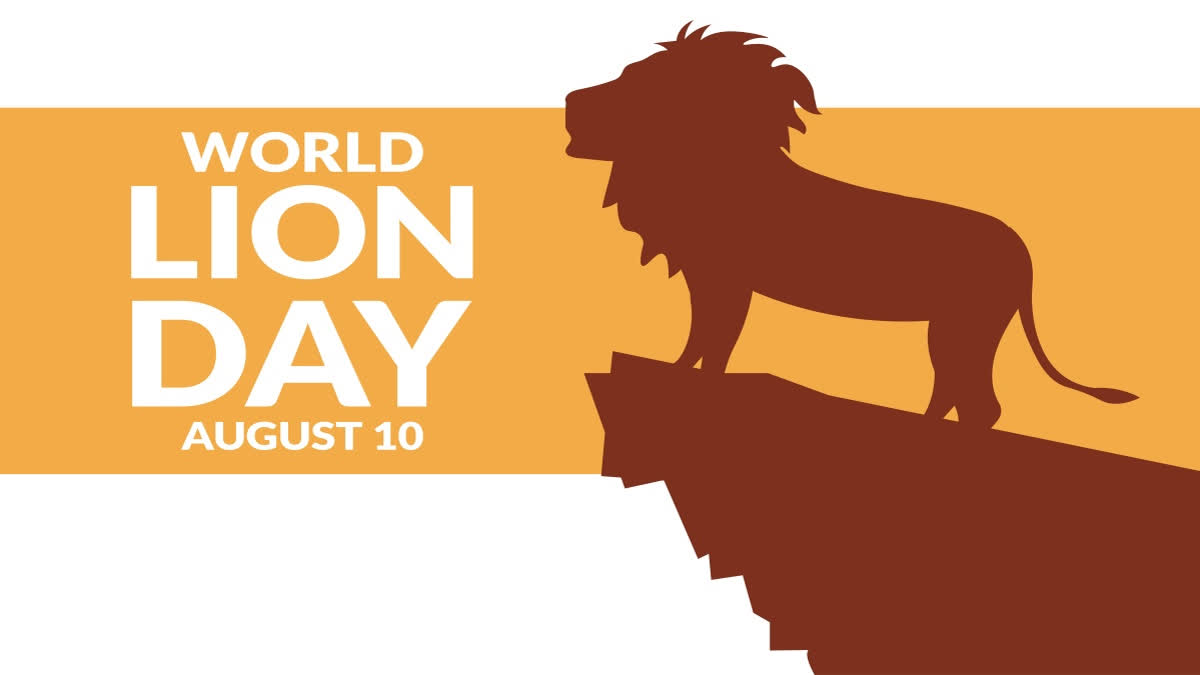Hyderabad: The World Lion Day is celebrated every year across the globe on August 10. The goal of this day is to increase public awareness of lion preservation and protection.
Its goals are to raise public awareness of the difficulties that these magnificent animals encounter all over the world and to encourage actions taken to ensure their continued existence. In addition, the day honours these big cats and recognises their essential role in ecosystems and a variety of cultures worldwide.
World Lion Day also offers a significant chance to increase public awareness of the difficulties this threatened species faces. Due to factors like habitat loss, climate change, and the illegal wildlife trade, lion populations are drastically dropping and are quickly approaching the endangered species status. It is currently estimated that the global lion population is between 30,000 and 100,000.
Significance of World Lion Day
August 10th, World Lion Day, is an important day to spread awareness of the problems that lions face. Lions, or Panthera leo as they are scientifically named, are one of the most famous and identifiable animal species. Their majestic presence is typified by their impressive stature and striking mane-covered appearance, earning them the nickname 'Kings of the Jungle'. Lions are revered and command respect for their powerful roar, which can be heard up to five miles away. Because of popular characters like Simba from 'The Lion King', lions are endearing to people, especially kids, and have a special place in popular culture.
Notwithstanding their historical abundance, poaching and hunting-related threats have caused lion populations to decline sharply over the past century.
History of World Lion Day
Filmmakers and environmentalists Dereck and Beverly Joubert founded the Big Cat Initiative (BCI) in 2009 with the goal of defending lions. These wild cats are becoming less common due to hunting and poaching. In an effort to save the extant lion species, National Geographic and the Big Cat Initiative (BCI) were founded. The first Lion Day was celebrated in 2013, and a new initiative called "World Lion Day" started.
Interesting Facts About The Lions
- Nearly all wild lions live in Africa, but one small population exists elsewhere
- Lions are powerful but lazy
- Lions can eat 40kg of meat at once
- They are the only cats that regularly live in social groups and their groups are called prides. The size of a typical pride is usually between 10 to 15 animals but it can vary between 2 to 40 members
- Many females give birth at the same time in pride, so the cubs nurse from other females as well
- Female lions often raise their cubs together. In fact, lion cubs will feed from any female within their pride that is producing milk. And, watching out for each other’s cubs is second nature for mother lions
- In the wild, lions may survive for 8 to 10 years, relatively short compared to an expected lifespan of over 25 years in captivity
- Adult male lions grow impressive manes, but manes are not just for cool looks. The manes can grow up to 16cm long and make lions look bigger than they are. That illusion of size proves useful in attracting mates and scaring off potential rivals
- All the lions in a pride usually roar together as a way to mark their territory and warn intruders. The roaring usually lasts for about 40 seconds
- Lions can get their water from plants
- Lions will sleep for at least 20 hours a day
Types of Lion from across the world
Barbary Lion, West African Lion, Southwest African Lion, Masai Lion, Transvaal Lion, Ethiopian Lion, Asiatic Lion, Endangered Lions
Facts about Lions
Tanzania in eastern Africa has the highest number of wild lions worldwide, roughly 14,500. Most of these majestic cats live in Tanzania's National Parks and Preserves. Another country with a significant lion population is South Africa - 3,284 animals.
An estimated 3,063 wild lions can be found in Botswana, while Kenya and Zambia each have approximately 2,500 animals within their borders. The countries of Zimbabwe, Mozambique, Nambia, and Angola have a combined total of 4,600 lions. Other countries with only a few hundred wild cats each include Uganda, Ethiopia, Sudan, and Cameroon. The population of Central South Africa has dwindled to roughly 50 lions.
The population of Asiatic lions has steadily grown in Gujarat's Gir forest and the broader Saurashtra protected area. The lion population escalated from 523 to 674 individuals between the years 2015 and 2020.
Lions in India
India is home to the last remaining population of Asiatic lions. These lions are found exclusively in the Gir National Park and Wildlife Sanctuary in Gujarat. As of the latest census, the population of lions in India stands at approximately 674 individuals. The conservation efforts in Gir National Park have been instrumental in stabilising and slightly increasing the number of Asiatic lions.
According to Gujarat State Forest and Environment Department sources, the Gir forest in Gujarat is the only natural habitat of the Asiatic lion. According to government data, the number of these big cats in Gir rose from 523 in 2015 to 674 in 2020.
Asiatic Lion Conservation Project: The Ministry of Environment, Forest and Climate Change, Government of India has launched the "Asiatic Lion Conservation Project" to protect and conserve the world’s last-ranging free population of Asiatic Lion and its associated ecosystem.



